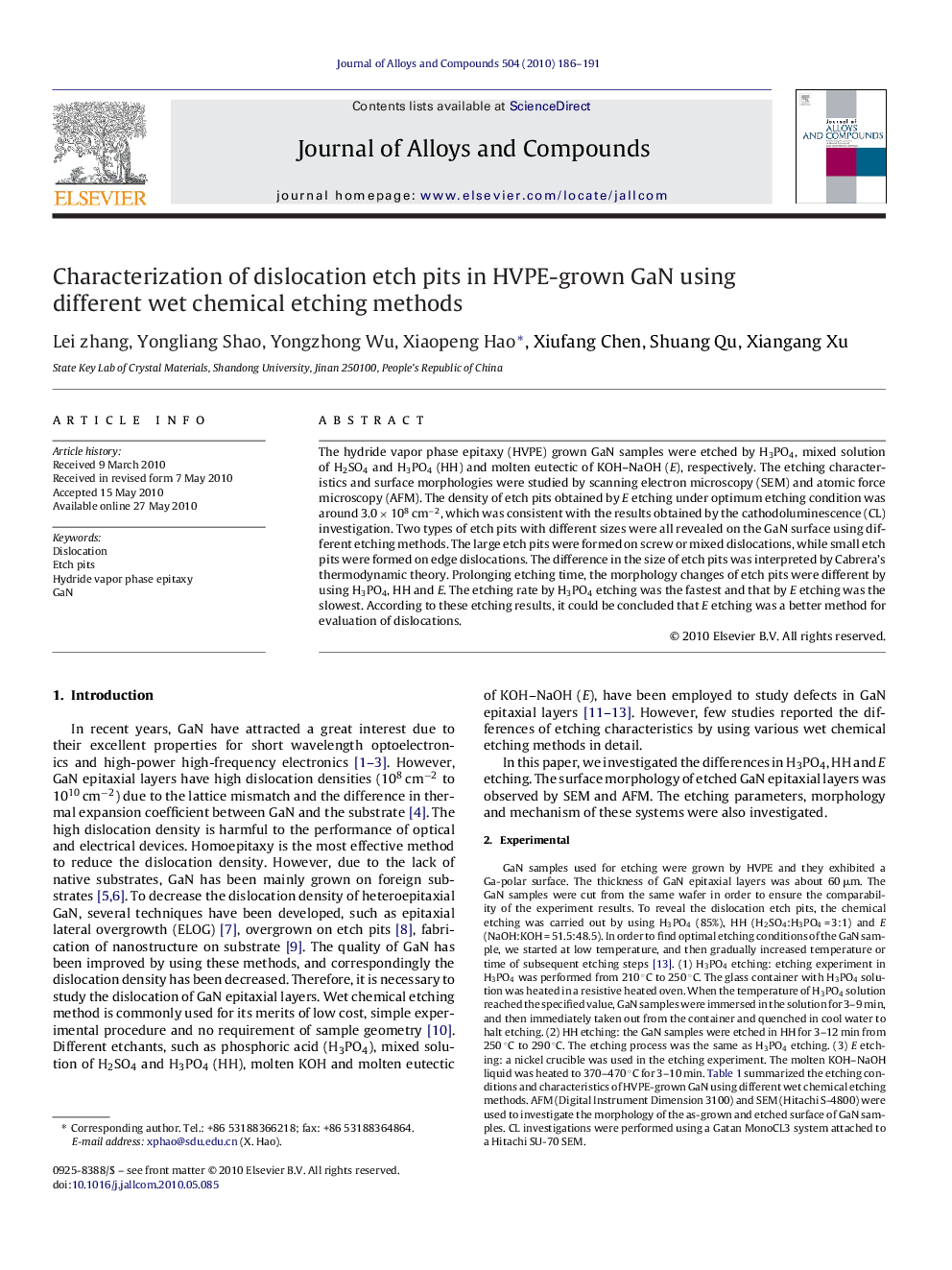| کد مقاله | کد نشریه | سال انتشار | مقاله انگلیسی | نسخه تمام متن |
|---|---|---|---|---|
| 1618173 | 1005701 | 2010 | 6 صفحه PDF | دانلود رایگان |

The hydride vapor phase epitaxy (HVPE) grown GaN samples were etched by H3PO4, mixed solution of H2SO4 and H3PO4 (HH) and molten eutectic of KOH–NaOH (E), respectively. The etching characteristics and surface morphologies were studied by scanning electron microscopy (SEM) and atomic force microscopy (AFM). The density of etch pits obtained by E etching under optimum etching condition was around 3.0 × 108 cm−2, which was consistent with the results obtained by the cathodoluminescence (CL) investigation. Two types of etch pits with different sizes were all revealed on the GaN surface using different etching methods. The large etch pits were formed on screw or mixed dislocations, while small etch pits were formed on edge dislocations. The difference in the size of etch pits was interpreted by Cabrera's thermodynamic theory. Prolonging etching time, the morphology changes of etch pits were different by using H3PO4, HH and E. The etching rate by H3PO4 etching was the fastest and that by E etching was the slowest. According to these etching results, it could be concluded that E etching was a better method for evaluation of dislocations.
Journal: Journal of Alloys and Compounds - Volume 504, Issue 1, 13 August 2010, Pages 186–191